 Writing a recipe is harder than it looks. I found this out when a children’s magazine editor asked me to add a recipe to my article about eating insects. First, I thumbed through my recipe file mentally substituting bugs for a vital ingredient. Mushrooms stuffed with millipedes was out. (Most kids don’t like mushrooms.) I nixed beetle sausage, also. (Too much chopping and frying in a hot skillet.) Flipping to desserts, I chose toffee. I could substitute bugs for nuts. After my trip to the grocery store for butter, sugar and chocolate chips, I visited the pet shop, and asked for a cup of mealworms, which are fly larvae (also known as maggots, but that’s not very appetizing). The man handed me a little carton that looked like a Skippy cup of ice cream. I wrote that down because I would need to pass that information on to readers who, like me, had no clue how to purchase creepy-crawlies. With all the ingredients on the counter I recorded each step:
After that, I was on familiar ground blending butter and sugar, and sprinkling chocolate chips. I called my concoction Toffee Surprise, and taste-tested it in a large group setting where peer pressure encouraged full participation -- my mother’s birthday party! The verdict: The toffee was yummy, crunchy, and sweet with a subtle earthy aftertaste. Although I don’t plan on cooking more edible vermin, I did learn some important rules for writing a recipe: Choose a food that is reader-friendly; be aware of your readers’ abilities and safety issues; record every step in order; pay attention to even the smallest details; and prepare it yourself so you can work out the bugs (no pun intended). 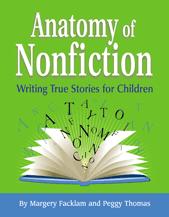 Peggy Thomas is the co-author of Anatomy of Nonfiction, the only writer's guide for children's nonfiction. To find out more about Peggy, visit her website. She also has a blog for writers, based on the book. Peggy Thomas is a member of iNK's Authors on Call and is available for classroom programs through FieldTripZoom, a terrific technology that requires only a computer, wifi, and a webcam. Click here to find out more. MLA 8 Citation
Thomas, Peggy. “How to Take an Elephant’s Temperature.” Nonfiction Minute, iNK Think Tank, 7 Nov. 2017, www.nonfictionminute.org/baking-with-bugs;-how-to-write-a-recipe.
0 Comments
 My knees shake as I stand behind Poonlarb, a towering female Asian elephant who rocks back and forth while the veterinarian explains the procedure. I pull on a rubber glove that goes up to my armpit, and grease my entire hand and arm with a lubricant. Taking an elephant’s temperature is one way the vet can assess the animal’s health, which is important at the Golden Triangle Asian Elephant Foundation (GTAEF) in Thailand where many of the elephants have been rescued from harsh lives hauling lumber, or begging on the busy streets of Bangkok. The GTAEF is one of many organizations struggling to protect abused, captive elephants, as well as educate people on the plight of the dwindling wild population. Loss of habitat and poaching for ivory has made the Asian elephant ten times more endangered than their big-eared African cousin. When the vet hands me the thermometer, I laugh. I was expecting something…well… elephant-sized. But the thermometer is no bigger than the one I use at home. Protecting the glass tip with my finger, I ask Poonlarb if she’s ready, and inch my hand into her rectum. “More,” the vet says, and I reach further pushing up on my tip-toes. Poonlarb’s muscles gently contract around my arm. If the mahout (elephant handler) wasn’t holding her tail, this nearly two ton female could easily knock me off my feet with one swish. I rub Poonlarb’s rump, and assure her it will be over soon, but four minutes is a long time when you have your hand up an elephant’s backside. I pull the thermometer out and hand it to the vet. “36.2 Celsius,” she says. “Normal.” That’s 97.2 degrees Fahrenheit. Poonlarb is one healthy elephant, and luckily for me, a patient patient. 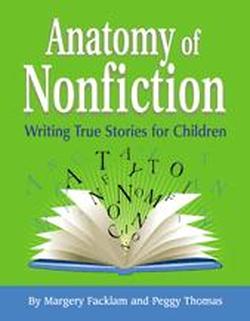 Peggy Thomas not only knows something of the anatomy of an elephant, but she knows the internal structure of nonfiction. Peggy Thomas is a member of iNK's Authors on Call and is available for classroom programs through FieldTripZoom, a terrific technology that requires only a computer, wifi, and a webcam. Click here to find out more. MLA 8 Citation Thomas, Peggy. “How to Take an Elephant’s Temperature.” Nonfiction Minute, iNK Think Tank, 23 Oct. 2017, www.nonfictionminute.org/the-nonfiction-minute/how-to-take-an-elephants-temperature. 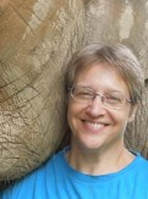 On April 13, 1787 Thomas Jefferson celebrated his 44th birthday riding a mule over the Alps on his way to Italy. Jefferson’s first official federal position after writing the Declaration of Independence was serving as Minister to France under President George Washington. Jefferson’s job was to grow America’s economy, which he did by forming trade agreements to sell whale oil and tobacco overseas. He also looked for new crops that could be grown in the U.S. and sold in Europe. One thing he noticed was that the French ate a lot of rice, but they didn’t buy rice grown in America. The French preferred dry or upland rice. American farmers grew “swamp” rice and suffered with mosquitoes and malaria. Jefferson thought that if American farmers switched to upland rice they would not only be able to sell it abroad, they would also be healthier. Jefferson asked for samples of upland rice from friends, farmers, ship captains who traveled to far off lands, and even the seven-year-old prince of Cochin China. The most prized rice, however, was grown in Italy and banned from export. Determined to help America, Jefferson rode over the Alps and found the unhusked grain. “I could only bring off as much as my coat and surtout [overcoat] pockets would hold,” he wrote a friend. Under penalty of death, he smuggled it across the border. Back in France, Jefferson sent rice to farmers in South Carolina and to his farm manager at Monticello, his home in Virginia. He even grew samples of rice in pots on his windowsill when he returned to New York to be Secretary of State. Unfortunately, the upland rice didn’t grow well in the South and didn’t become a big export for the U.S., but Jefferson was not discouraged. He had already set his sights on another amazing plant that he hoped would be “the source of the greatest wealth and happiness.” Olive trees. Many years later when Jefferson listed his achievements, along with writing the Declaration of Independence he included his attempts to bring rice and olives to the United States. “The greatest service which can be rendered any country,” he said, “is to add an useful plant to its culture.” Celebrate his birthday with a salad made from some of the useful plants he brought to our culture— kale, tomatoes, peppers and chickpeas with a splash of olive oil. Happy Birthday, Thomas Jefferson! 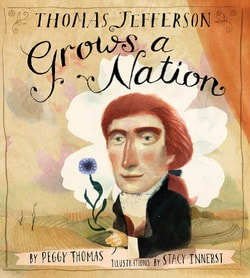 Peggy Thomas is the author of Thomas Jefferson Grows a Nation Among her other books are: * For the Birds: the life of Roger Tory Peterson * Snow Dance * Farmer George Plants A Nation * Joshua the Giant Frog * Forensic Anthropology: the Science of Talking Bones MLA 8 Citation
Thomas, Peggy. "Happy Birthday Thomas Jefferson - Smuggler!" Nonfiction Minute, iNK Think Tank, 13 Apr. 2018, www.nonfictionminute.org/ the-nonfiction-minute/happy-birthday-thomas-jefferson-smuggler.  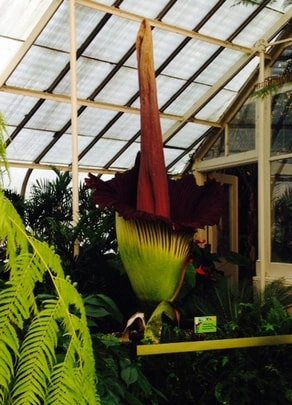 Regular visiting hours are over at the Buffalo Botanical Gardens, but the line to see Morty reaches out the door. It’s an event that comes once in a decade, so I’m happy to wait for my chance to see, and smell, what’s inside. A year ago the Botanical Gardens acquired corms or bulbs of a tropical plant called the corpse flower. These aren’t little tulip bulbs you hold in your hand. The corpse flower corm weighs 120 pounds and looks like a giant potato. A corm that big needs a lot of energy to grow, so, it spends several months dormant underground. When the first hint of green peeks through the soil, it’s a guessing game as to what it will look like. Most of the time, the corpse flower will send up a slender shoot and one complex leaf that looks like a tree canopy. Through photosynthesis, this leaf will provide energy that will be stored in the corm. When there is enough energy stored up, Morty will flower. And that’s what I’m excited to witness. Weaving my way through displays of cactus, palms, and banana trees, I wonder if someone forgot to take the trash out. The odor of rotting meat wrinkles my nose, and I realize why Morty is called a corpse flower. As we move closer, the air grows thicker. This plant has been dumpster diving. The stink Morty sends forth is the plant’s way to attract pollinators in its native jungle of Sumatra. The flower only lasts a day or two, so the scent has to be pungent enough to quickly draw in dung beetles and carrion flies that will collect the pollen and distribute it to other plants before it wilts. It’s curiosity that lures me in. I round the corner and catch my first glimpse of the stinker. Since it poked out of the ground it has grown five to six inches every day, and now Morty’s seven-foot spire, called a spadix, towers over me. I have to step back to catch the entire plant in my camera lens. Like a wicked witch’s collar, Morty wears a single pleated, blood red flower petal wrapped around the spadix. By midnight the flower will be fully opened and have reached maximum reek. I click more pictures and take a deep breath. It will be a long time before Morty blooms again, and I want to remember every smelly detail.  Peggy Thomas certainly is a Curiosity Queen. You'll recall that her last Nonfiction Minute showed her taking an elephant's temperature -- not an easy task. Her book Anatomy of Nonfiction shows other authors how to write about real events. To read about some of Peggy's other adventures and to find out about her books, visit her website. MLA 8 Citation
Thomas, Peggy. "Morty Makes a Stink." Nonfiction Minute, iNK Think Tank, 9 01 2018, www.nonfictionminute.org/the-nonfiction-minute/Morty-Makes-a-Stink. 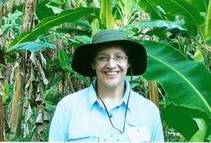
Question: If your favorite snack was just out of reach, what would you do?
That’s what Preston Foerder, who studies animal behavior, asked Kandula, a male Asian elephant at the Smithsonian National Zoological Park in Washington, D.C. Scientists have always thought that using a tool to solve a problem was a sign of higher intelligence. They also thought that only humans were tool users. But then Jane Goodall discovered chimps using sticks to fish termites out of a hole, and ravens were observed making hooks to nab a treat. People who’ve worked with elephants have long known that they are highly intelligent, but no one ever tested an elephant’s ability to use a tool to solve a problem. To set up the experiment, Preston skewered Kandula’s favorite fruits on a branch and suspended it well out of trunk reach. Then he scattered potential tools such as long bamboo sticks and a heavy-duty plastic cube around the yard. At first Kandula just stared at the fruit longingly. Occasionally he picked up a stick, but only played with it. On the seventh trial, Kandula got an idea. He rolled the cube several yards so it was beneath the fruit. He placed his two front feet on the cube, stretched his trunk as high as he could, and plucked the fruit off the branch. The next day, as soon as Preston suspended the fruit, Kandula was already shoving his cube into place. He seemed to enjoy his new tool. He used it to peek over walls, to check out birds in a nearby tree, and to eat blossoms off another tree that grew outside his yard. Later, Kandula showed off by using a tractor tire and then a large ball as a stool. He even figured out that if he stacked one small block on top of another he might be able to reach higher fruit. Although he came up short (he needed to stack 3 blocks), he still showed that his brain was working out the problem. So, congratulations! If you said you’d use a stool to reach your favorite snack, then you are as smart as an elephant. 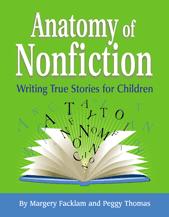
Peggy Thomas is co-author of Anatomy of Nonfiction, the only writer’s guide to crafting true stories for children. She is currently working on a book about elephant intelligence. To learn more, visit her website.
Peggy Thomas is a member of iNK's Authors on Call and is available for classroom programs through FieldTripZoom, a terrific technology that requires only a computer, wifi, and a webcam. Click here to find out more.
MLA 8 Citation
Thomas, Peggy. “Are You as Smart as an Elephant?.” Nonfiction Minute, iNK Think Tank, 17 Nov. 2017, www.nonfictionminute.org/are-you-as-smart-as-an-elephant? |
*NEWS
|
For Vicki Cobb's BLOG (nonfiction book reviews, info on education, more), click here: Vicki's Blog
The NCSS-CBC Notable Social Studies Committee is pleased to inform you
that 30 People Who Changed the World has been selected for Notable Social Studies Trade Books for Young People 2018, a cooperative project of the National Council for the Social Studies (NCSS) & the Children’s Book Council
Categories
All
Abolitionists
Adams Janus
Adaptation
Adaptations
Adkins Jan
Advertising
Aerodynamics
Africa
African American History
African Americans
Africa West
Agriculture
Aircraft
Air Pilots
Air Pressure
Air Travel
Albee Sarah
Alchemy
Alligators
Allusion
American History
American Icons
Amphibians
Amundsen Roald
Anatomy
Ancient
Ancient Cultures
Anderson Marian 1897-1993
Animal Behavior
Animal Experimentation
Animal Intelligence
Animals
Animation
Antarctica
Ants
Apache Indians
Apes
April Fool's Day
Architecture
Argument
Arithmetic
Art
Art Deco
Artists
Arts
Asia
Astronauts
Astronomy
Athletes
Atomic Theory
Audubon Societies
Authors
Autobiography
Automobiles
Aviation
Awards
Bacteria
Baseball
Battuta Ibn
Bears
Beatles
Beavers
Bees
Biodegradation
Biography
Biology
Biomes
Biomimicry
Biplanes
Birds
Black Death
Black History
Blindness
Blizzards
Bombs
Bonaparte Napoleon
Boone Daniel
Botany
Brazil
Bridges
Brill Marlene Targ
Brooklyn Bridge
Brown John
Buffaloes
Building Materials
Butterflies
Caesar
Caesar Julius
Caissons
Calculus
Calendars
Cannibal
Capitals
Caravaggio
Carbon Dioxide
Carnivores
Carson Mary Kay
Cartoons & Comics
Carving (Decorative Arts)
Cascade Range
Castaldo Nancy
Castles
Castrovilla Selene
Cathedrals
Cats
Caves
Celts
Cemeteries
Chemistry
Children's Authors
Child Welfare
China
Choctaw Indians
Christmas
Chronometers
Cicadas
Cinco De Mayo
Ciphers
Circle
Citizenship
Civil Rights
Civil Rights Movements
Civil War
Civil War - US
Climate
Climate Change
Clocks And Watches
Clouds
Cobb Vicki
COBOL (Computer Language)
Code And Cipher Stories
Collard III Sneed B.
Collectors And Collecting
Color
Commerce
Communication
Competition
Compilers
Composers
Computers
Congressional Gold Medal
Consitution
Contests
Contraltos
Coolidge Calvin
Cooling
Corms
Corn
Counterfeiters
Covid-19
Crocodiles
Cryptography
Culture
Darwin Charles
Declaration Of Independence
Decomposition
Decompression Sickness
Deep-sea Animals
Deer
De Medici Catherine
Design
Detectives
Dickens Charles
Disasters
Discrimination
Diseases
Disney Walt
DNA
Dogs
Dollar
Dolphins
Douglass Frederick 1818-1895
Droughts
Dr. Suess
Dunphy Madeleine
Ear
Earth
Earthquakes
Ecology
Economics
Ecosystem
Edison Thomas A
Education
Egypt
Eiffel-gustave-18321923
Eiffel-tower
Einstein-albert
Elephants
Elk
Emancipationproclamation
Endangered Species
Endangered-species
Energy
Engineering
England
Englishlanguage-arts
Entomology
Environmental-protection
Environmental-science
Equinox
Erie-canal
Etymology
Europe
European-history
Evolution
Experiments
Explorers
Explosions
Exports
Extinction
Extinction-biology
Eye
Fairs
Fawkes-guy
Federalgovernment
Film
Fires
Fishes
Flight
Floods
Flowers
Flute
Food
Food-chains
Foodpreservation
Foodsupply
Food-supply
Football
Forceandenergy
Force-and-energy
Forensicscienceandmedicine
Forensic Science And Medicine
Fossils
Foundlings
France
Francoprussian-war
Freedom
Freedomofspeech
French-revolution
Friction
Frogs
Frontier
Frontier-and-pioneer-life
Frozenfoods
Fugitiveslaves
Fultonrobert
Galapagos-islands
Galleys
Gametheory
Gaudi-antoni-18521926
Gender
Generals
Genes
Genetics
Geography
Geology
Geometry
Geysers
Ghosts
Giraffe
Glaciers
Glaucoma
Gliders-aeronautics
Global-warming
Gods-goddesses
Gold-mines-and-mining
Government
Grant-ulysses-s
Grasshoppers
Gravity
Great-britain
Great-depression
Greece
Greek-letters
Greenberg Jan
Hair
Halloween
Handel-george-frederic
Harness Cheryl
Harrison-john-16931776
Health-wellness
Hearing
Hearing-aids
Hearst-william-randolph
Henry-iv-king-of-england
Herbivores
Hip Hop
History
History-19th-century
History-france
History-world
Hitler-adolph
Hoaxes
Holidays
Hollihan Kerrie Logan
Homestead-law
Hopper-grace
Horses
Hot Air Balloons
Hot-air-balloons
Housing
Huguenots
Human Body
Hurricanes
Ice
Icebergs
Illustration
Imagery
Imhotep
Imperialism
Indian-code-talkers
Indonesia
Industrialization
Industrial-revolution
Inquisition
Insects
Insulation
Intelligence
Interstatecommerce
Interviewing
Inventions
Inventors
Irrational-numbers
Irrigation
Islands
Jacksonandrew
Jazz
Jeffersonthomas
Jefferson-thomas
Jemisonmae
Jenkins-steve
Jet-stream
Johnsonlyndonb
Jokes
Journalism
Keeling-charles-d
Kennedyjohnf
Kenya
Kidnapping
Kingmartinlutherjr19291968
Kingmartinlutherjr19291968d6528702d6
Kings-and-rulers
Kings Queens
Kings-queens
Koala
Labor
Labor Policy
Lafayette Marie Joseph Paul Yves Roch Gilbert Du Motier Marquis De 17571834
Landscapes
Languages-and-culture
Law-enforcement
Layfayette
Levers
Levinson Cynthia
Lewis And Clark Expedition (1804-1806)
Lewis Edmonia
Liberty
Lift (Aerodynamics)
Light
Lindbergh Charles
Liszt Franz
Literary Devices
Literature
Lizards
Longitude
Louis XIV King Of France
Lumber
Lunar Calendar
Lynching
Macaws
Madison-dolley
Madison-james
Madison-james
Mammals
Maneta-norman
Maneta-norman
Marathon-greece
Marine-biology
Marine-biology
Marines
Marsupials
Martial-arts
Marx-trish
Mass
Massachusetts-maritime-academy
Mass-media
Mastodons
Mathematics
May-day
Mcclafferty-carla-killough
Mcclafferty-carla-killough
Mckinley-william
Measurement
Mechanics
Media-literacy
Media-literacy
Medicine
Memoir
Memorial-day
Metaphor
Meteorology
Mexico
Mickey-mouse
Microscopy
Middle-west
Migration
Military
Miners
Mississippi
Molasses
Monarchy
Monsters
Montgomery
Montgomery-bus-boycott-19551956
Montgomery-heather-l
Monuments
Moon
Moran-thomas
Morsecode
Morsesamuel
Moss-marissa
Moss-marissa
Motion
Motion-pictures
Mummies
Munro-roxie
Munro-roxie
Musclestrength
Museums
Music
Muslims
Mythologygreek
Nanofibers
Nanotechnology
Nathan-amy
Nathan-amy
Nationalfootballleague
Nationalparksandreserves
Nativeamericans
Native-americans
Native-americans
Naturalhistory
Naturalists
Nature
Nauticalcharts
Nauticalinstruments
Navajoindians
Navigation
Navy
Ncaafootball
Nervoussystem
Newdeal19331939
Newman-aline
Newman-aline
Newton-isaac
New-york-city
Nobelprizewinners
Nomads
Nonfictionnarrative
Nutrition
Nylon
Nymphs-insects
Oaths Of Office
Occupations
Ocean
Ocean-liners
Olympics
Omnivores
Optics
Origami
Origin
Orphans
Ottomanempire
Painters
Painting
Paleontology
Pandemic
Paper-airplanes
Parksrosa19132005
Parrots
Passiveresistance
Patent Dorothy Hinshaw
Peerreview
Penguins
Persistence
Personalnarrative
Personification
Pets
Photography
Physics
Pi
Pigeons
Pilots
Pinkertonallan
Pirates
Plague
Plains
Plainsindians
Planets
Plantbreeding
Plants
Plastics
Poaching
Poetry
Poisons
Poland
Police
Political-parties
Pollen
Pollution
Polo-marco
Populism
Portraits
Predation
Predators
Presidentialmedaloffreedom
Presidents
Prey
Prey-predators
Prey-predators
Prime-meridian
Pringle Laurence
Prohibition
Proteins
Protestandsocialmovements
Protestants
Protestsongs
Punishment
Pyramids
Questioning
Radio
Railroad
Rainforests
Rappaport-doreen
Ratio
Reading
Realism
Recipes
Recycling
Refrigerators
Reich-susanna
Religion
Renaissance
Reproduction
Reptiles
Reservoirs
Rheumatoidarthritis
Rhythm-and-blues-music
Rice
Rivers
Roaringtwenties
Roosevelteleanor
Rooseveltfranklind
Roosevelt-franklin-d
Roosevelt-theodore
Running
Russia
Safety
Sanitation
Schwartz David M
Science
Scientificmethod
Scientists
Scottrobert
Sculpture
Sculpturegardens
Sea-level
Seals
Seals-animals
Secretariesofstate
Secretservice
Seeds
Segregation
Segregationineducation
Sensessensation
September11terroristattacks2001
Seuss
Sextant
Shackletonernest
Shawneeindians
Ships
Shortstories
Silkworms
Simple-machines
Singers
Siy Alexandra
Slavery
Smuggling
Snakes
Socialchange
Social-change
Socialjustice
Social-justice
Socialstudies
Social-studies
Social-studies
Sodhouses
Solarsystem
Sound
Southeast-asia
Soybean
Space Travelers
Spain
Speech
Speed
Spiders
Spies
Spiritualssongs
Sports
Sports-history
Sports-science
Spring
Squirrels
Statue-of-liberty
STEM
Storms
Strategy
Sugar
Sumatra
Summer
Superbowl
Surgery
Survival
Swanson-jennifer
Swinburne Stephen R.
Synthetic-drugs
Taiwan
Tardigrada
Tasmania
Tasmanian Devil
Tasmanian-devil
Technology
Tecumsehshawneechief
Telegraph-wireless
Temperature
Tennis
Terrorism
Thomas Peggy
Thompson Laurie Ann
Time
Titanic
Tombs
Tortoises
Towle Sarah
Transcontinental-flights
Transportation
Travel
Trees
Trung Sisters Rebellion
Tundra
Turnips
Turtles
Typhoons
Underground Railroad
Us-environmental-protection-agency
Us History
Us-history
Ushistoryrevolution
Us History Revolution
Us-history-war-of-1812
Us Presidents
Ussupremecourtlandmarkcases
Vacations
Vaccines
Vangoghvincent
Vegetables
Venom
Vietnam
Viruses
Visual-literacy
Volcanoes
Voting-rghts
War
Warne-kate
Warren Andrea
Washington-dc
Washington George
Water
Water-currents
Wax-figures
Weapons
Weather
Weatherford Carole Boston
Whiting Jim
Wildfires
Winds
Windsor-castle
Wolves
Woman In History
Women
Women Airforce Service Pilots
Women-airforce-service-pilots
Womeninhistory
Women In History
Women-in-science
Women's History
Womens-roles-through-history
Wonder
Woodson-carter-godwin-18751950
World-war-i
World War Ii
World-war-ii
Wright Brothers
Writing
Writing-skills
Wwi
Xrays
Yellowstone-national-park
Zaunders Bo
ArchivesMarch 2021
February 2021
January 2021
December 2020
November 2020
October 2020
September 2020
June 2020
May 2020
April 2020
March 2020
February 2020
January 2020
December 2019
October 2019
September 2019
August 2019
July 2019
May 2019
April 2019
March 2019
February 2019
January 2019
December 2018
November 2018
September 2018
June 2018
May 2018
April 2018
March 2018
February 2018
January 2018
December 2017
November 2017
October 2017
September 2017
March 2017
The NONFICTION MINUTE, Authors on Call, and. the iNK Books & Media Store are divisions of iNK THINK TANK INC.
a 501 (c) (3) nonprofit corporation. To return to the iNK Think Tank landing page click the icon or the link below. :
http://inkthinktank.org/
For more information or support, contact thoughts@inkthinktank.org
For Privacy Policy, go to
Privacy Policy
© COPYRIGHT the Nonfiction Minute 2020.
ALL RIGHTS RESERVED.
This site uses cookies to personalize your experience, analyze site usage, and offer tailored promotions. www.youronlinechoices.eu
Remind me later
Archives
March 2023
February 2023
January 2023
December 2022
November 2022
October 2022
September 2022
June 2022
May 2022
April 2022
March 2022
February 2022
January 2022
December 2021
November 2021
September 2021
April 2021
March 2021
February 2021
November 2020
October 2020
September 2020
June 2020
May 2020
April 2020
March 2020
February 2020
January 2020
October 2019
August 2019
July 2019
May 2019
April 2019
December 2018
September 2018
June 2018
May 2018
March 2018
February 2018
January 2018
December 2017
November 2017
October 2017
September 2017


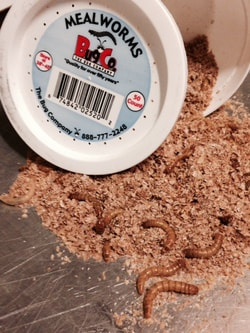
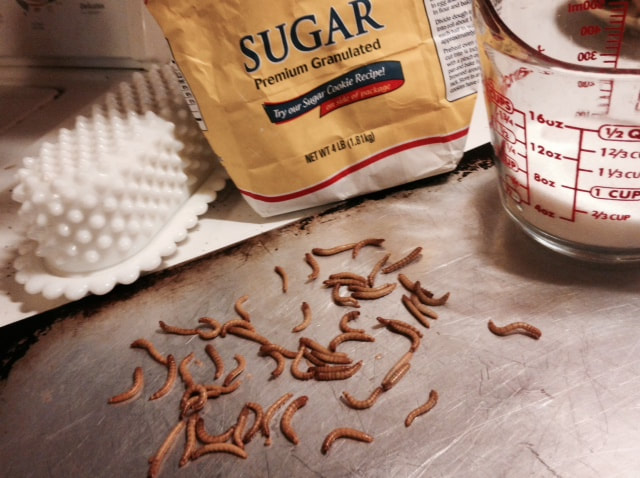


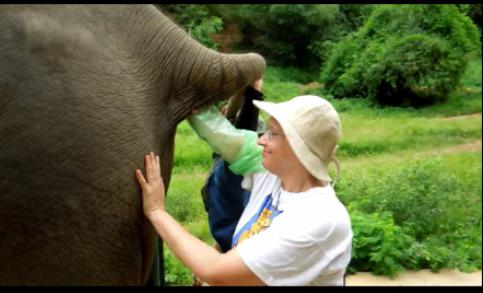


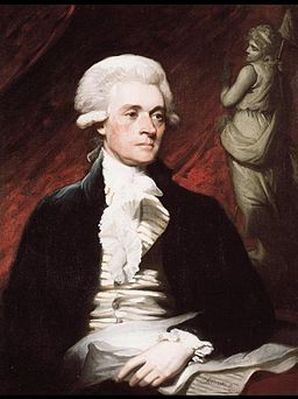
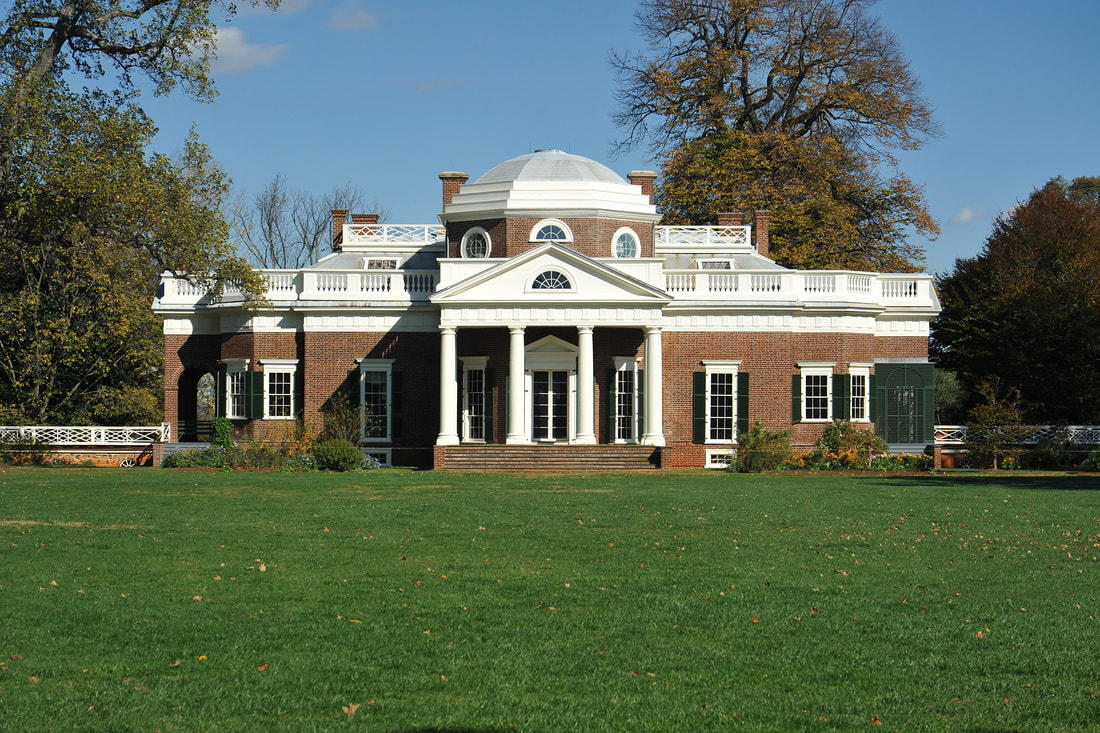






 RSS Feed
RSS Feed
